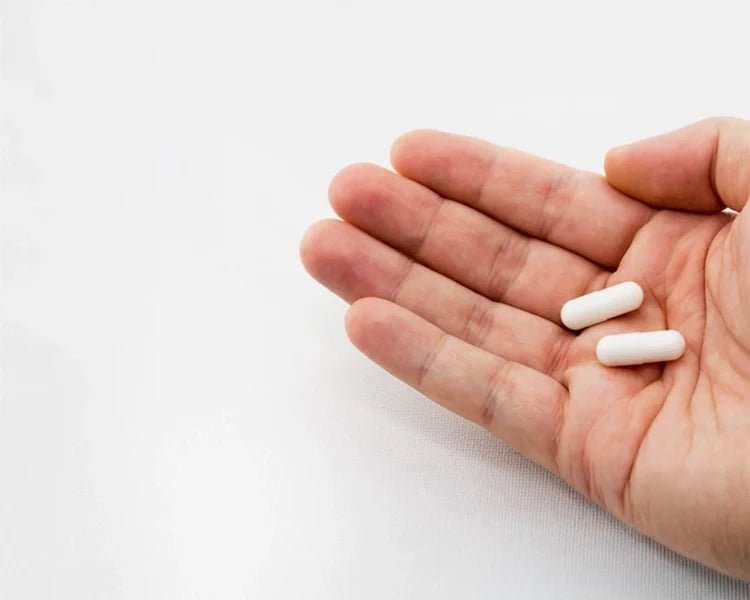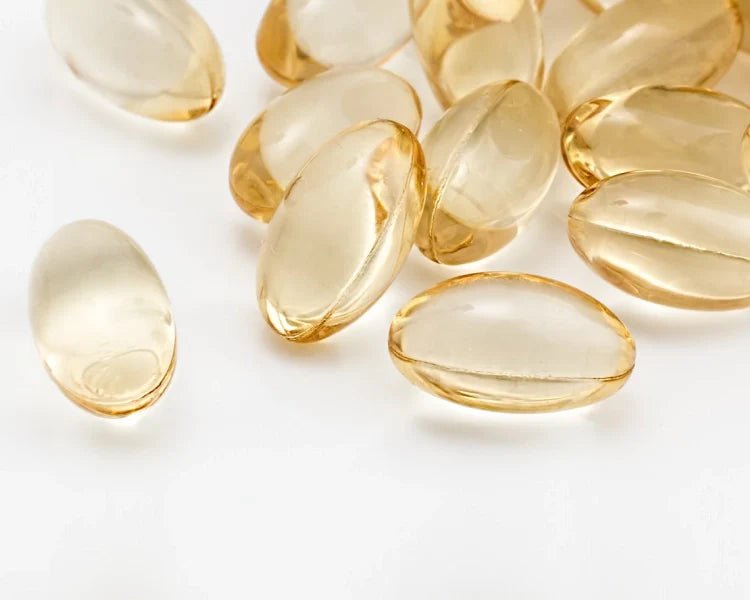Education
Diagnosis and treatment of gastroesophageal reflux disease and the risk of cancer
Gastroesophageal reflux disease (GERD) is a common condition that occurs when stomach contents flow back into the esophagus, causing irritation to the lining. Although GERD is usually bothersome and causes unpleasant symptoms such as chest pain, it is worth noting that it may also be associated with a potential risk of developing esophageal cancer. In this article, we will discuss the importance of diagnosing and treating gastroesophageal reflux disease in the context of minimizing the risk of esophageal cancer. The diagnosis of gastroesophageal reflux disease is based on the analysis of the patient's symptoms, such as a burning sensation in the esophagus, difficulty swallowing, as well as on a physical examination. However, in order to confirm the diagnosis and assess the degree of damage to the esophageal mucosa, it is worth considering additional diagnostic tests. The most commonly used tests are upper gastrointestinal endoscopy and 24-hour pH-metry. Endoscopy allows for direct visualization of the esophagus and possible detection of damage such as ulcers or strictures. pH-metry allows measuring the number of episodes and duration of gastroesophageal reflux. Treatment of GERD aims to alleviate symptoms, prevent complications, and reduce the risk of developing esophageal cancer. The main treatments include lifestyle modifications. Patients with GERD should: avoid eating large meals before bed, avoid foods and drinks that cause heartburn (e.g. spicy foods, caffeine, alcohol), maintain a healthy weight through regular physical activity. If reflux disease occurs, drug therapy is also initiated. The mainstay of therapy are antacids, such as proton pump inhibitors (PPIs). Sometimes surgical procedures are also necessary. If there is no improvement with medical treatment, some patients must undergo surgery, such as fundoplication, to strengthen the lower esophageal sphincter and reduce gastroesophageal reflux. Although most patients with GERD do not develop esophageal cancer, there is some increased risk of developing the disease with long-term untreated or poorly controlled acid reflux. Excessive and frequent irritation of the esophageal mucosa by gastric acid may lead to chronic esophagitis, metaplasia and dysplastic changes in the esophageal mucosa. In some cases, these changes may develop into esophageal cancer. Therefore, it is clear that the diagnosis and treatment of gastroesophageal reflux disease are important not only to alleviate the patient's symptoms, but also to minimize the risk of developing esophageal cancer. Patients with GERD should consult a gastroenterologist regularly for appropriate treatment and monitoring of their health. Early detection and effective management of reflux disease can reduce the risk of complications, including the development of esophageal cancer. Adam Trzciński
Learn moreThe importance of sleep in cancer prevention
Sleep plays an extremely important role in our health and a well-functioning body, and according to reports from the European Sleep Research Society (ESRS), approximately 30-45% of adults experience periodic sleep problems, such as insomnia, difficulty falling asleep. , night awakenings, etc. Data on sleep problems in Poland show similar trends. Research conducted over the past five years suggests that sleep also has a significant impact on cancer prevention. Not getting enough sleep may be linked to a higher risk of developing certain types of cancer, both benign and malignant. According to research by the American Cancer Society, short sleep and sleep disorders may increase the risk of breast, colon and prostate cancer. Melatonin, a hormone that regulates circadian rhythm and sleep, has been identified as a potential protective factor against cancer. Research suggests that high levels of melatonin in the body may reduce the risk of developing certain cancers, such as breast cancer and colon cancer. Sleep disorders may weaken the immune system, which may increase susceptibility to the development of cancer. Studies have shown that inadequate sleep can lead to a reduction in the activity of immune system cells responsible for fighting cancer cells. Poor sleep can lead to metabolic disorders such as insulin resistance and obesity, which in turn are associated with a higher risk of certain types of cancer, including breast, pancreatic and colorectal cancer. Additionally, the quality of sleep affects disorders throughout the body, it is worth familiarizing yourself with them to motivate yourself to change this area of your lifestyle! Let's remember that depending on genetic predispositions, the first symptoms of sleep deprivation may appear at different levels of the body... Lack of sleep or an inadequate amount of sleep has been linked to an increased risk of heart diseases such as hypertension, coronary artery disease, stroke and heart failure. Poor quality sleep can lead to deterioration in cognitive functions such as concentration, attention, memory and cognition. Reduced sleep can affect cognitive processes that are important for learning, work and overall mental functioning. Lack of sleep is associated with a greater risk of depression, mood disorders and poor mental well-being. Taking care of regular and quality sleep may be an important element of cancer prevention. Let's try to maintain healthy sleep habits, such as a regular bedtime routine, creating a favorable sleep environment, and avoiding factors that can disturb sleep. Remember that sleep plays a key role not only in your overall physical well-being, but also in your mental well-being! In the next article - How to ensure better sleep? Solutions for problems with falling asleep or waking up during the night! AUTHOR: Zuzanna Pilipiuk SENSORY INTEGRATION THERAPIST, PHYSIOTHERAPIST, SPEECH THERAPIST BIBLIOGRAPH: American Cancer Society (ACS). (2021). Sleep and Cancer Risk. Brzecka, A., Lesicki, A., Epistolio, S., & Gobbi, M. (2018). The relationship between melatonin and cancer. Advances in Hygiene and Experimental Medicine, 72(0), III. Cappuccio, FP et al., Sleep duration and all-cause mortality: a systematic review and meta-analysis of prospective studies, European Heart Journal, 2011 Lim, J. & Dinges, D.F., A meta-analysis of the impact of short-term sleep deprivation on cognitive variables, Psychological Bulletin, 2010 Author: Zuzanna Pilipiuk SENSORY INTEGRATION THERAPIST, PHYSIOTHERAPIST, SPEECH THERAPIST
Learn moreWhat causes cancer?
In recent years, scientific research has contributed to a better understanding of carcinogens, substances or environmental factors that can lead to the development of cancer. These dangerous compounds may be present in the air, food and even everyday products! Please remember that avoiding these substances may reduce your risk of cancer! Carcinogenic factors The most important EXTERNAL carcinogenic factors include: Tobacco smoke: Tobacco smoking is one of the greatest risk factors for cancer, not only of the lungs, but also of the urinary bladder, liver and large intestine!! What makes cigarettes so harmful? Tobacco products include, for example : CADM, BENZOPYRENE, BENZENE, FORMALDEHYDE AND ARSEN! Air pollution: Long-term inhalation of toxic airborne substances, such as dust and exhaust fumes, may increase the risk of developing various types of cancer. Unfortunately, in large cities we are unable to avoid exposure to these factors, especially in the autumn and winter. Environmental Pollution: Certain chemicals present in the environment, such as pesticides and nitrogen compounds. Unhealthy diet: Certain dietary components , such as processed meats , excess salt and trans fats, may increase the risk of cancer, such as colon and breast cancer. Additionally, you should watch out for: Aflatoxins are toxins produced by Aspergillus molds that can grow on various foods such as nuts, seeds, cereal grains, dried fruits and spices. Aflatoxins are considered carcinogenic to humans and may increase the risk of developing liver cancer! Nitrosamines - chemical compounds formed as a result of the reaction between nitrates/nitrites and organic amines. They may be present in meat products, such as cold cuts, which contain nitrate additives. Nitrosamines are considered carcinogenic and may increase the risk of developing stomach, colon and pancreatic cancer. Acrylamide , a chemical compound formed as a result of the reaction between amino acids and sugars during high temperatures, such as frying, baking or grilling. Acrylamide is present in food products such as potato chips, French fries, bread, as well as coffee and cocoa. It is considered a strong carcinogen! Attention! If that were not enough... The degree of harmfulness of these factors will depend on various ENDOGENOUS processes and disorders. Here we can point out the main INTERNAL factors: Mutations in genes that control growth, cell division and DNA repair can lead to uncontrolled cell growth and cancer. Some of these mutations may be inherited, while others may be the result of errors in the DNA replication process!! Interestingly, you can influence this process with external factors - DIET AND PHYSICAL ACTIVITY !! Some hormonal disorders, such as excessive production of sex hormones, may increase the risk of developing cancers such as breast cancer, ovarian cancer and prostate cancer. ATTENTION! These processes can be influenced by SLEEP! Inflammation: Chronic inflammation in the body can lead to tissue damage and changes in repair processes, which in turn can promote the development of cancer. An example is liver cancer caused by chronic inflammation of the liver caused by the hepatitis B or C virus. A weakened or improper functioning of the immune system may lead to incorrect recognition and destruction of cancer cells. People with immune disorders such as syndrome Such a wide list of factors contributing to the development of CANCER gives food for thought. Nowadays, it is difficult for us to limit a significant part of the prescribed substances or change our lifestyle from one day to the next, so learn about CANCER prevention and try to limit carcinogenic factors as much as possible, take care of a balanced diet, sleep, and reasonable supplementation that will support natural processes. detoxify the body, making it easier to fight free radicals! AUTHOR: Marta Wcześniak CLINICAL DIETITIAN BIBLIOGRAPH: International Agency for Research on Cancer (IARC). (2018). Tobacco Smoke and Involuntary Smoking. International Agency for Research on Cancer (IARC). (2020). Outdoor Air Pollution. International Agency for Research on Cancer (IARC). (2019). Chemical Agents International Agency for Research on Cancer (IARC), 2018] American Cancer Society (ACS). (2021). What Causes Cancer? Theodoratou, E., & Timofeeva, M. (2019). Cancer epidemiology: associations and mechanisms of endogenous causes. In Molecular Pathology of Cancer (pp. 15-26). Springer, Cham.
Learn moreWhat is the difference between cancer and tumor?
Colloquially, the terms cancer and cancer are often used interchangeably, but they are not synonyms! To understand the terms mentioned, we will describe the difference in their meaning after the fudge. What are cancers? CANCER - these are pathological formations originating from normal body tissues, created by mutated cells (called cancer cells), which grow in a way that is completely uncontrolled by the body. We divide them into two basic groups - benign and malignant tumors. Benign (non-malignant) tumors - these are tissue masses, not much different in structure from the image of healthy tissues, most often encapsulated, developing slowly. Importantly, they do not destroy surrounding tissues, do not infiltrate and do not have the ability to metastasize. Common symptoms of the disease include bleeding or pressure on adjacent organs. This type of pathology includes papillomas, adenomas, fibroids, and lipomas. In most cases, their treatment is not complicated and although they occur more often than CANCER, they do not pose a major oncological problem. However, it should be remembered that even minor therapies or surgeries can cause considerable stress to the patient and his family. Can a benign change "change your attitude" ? It happens that benign changes may turn into malignant ones. Tissues with such predispositions are called precancerous lesions - a great example of this are adenomas (polyps) of the large intestine, which herald a greater risk of developing colorectal cancer. Cancer transformation is a long-term and multi-stage process. It occurs as a result of a series of gene mutations in the cell, i.e. under the influence of genetic predisposition and environmental factors, such as: ionizing radiation (e.g. X-rays) free radicals produced in the human body or entering it through food, air or cigarette smoke, air pollution, hormonal therapies, strong exposure to chemicals with carcinogenic properties. Malignant tumors - tumors with low tissue differentiation, do not have capsules, and at the same time not only infiltrate adjacent organs, damaging their healthy structure, but also have the ability to grow very quickly, uncontrolled and create metastases (i.e. tumors in various, unrelated places). body, they use the circulatory or lymphatic system for this purpose). Unlike benign tumors, malignant tumors tend to recur after treatment. These are pathologies with aggressive development, significantly more dangerous to health and life. Depending on the tissue from which the disorder originates, malignant tumors are divided into types: CANCER (epithelial cells) - the most common ones include ENDURAL CANCER , BREAST CANCER, COLOR INTESTINE CANCER, PROSTATE CANCER, URINARY BADDER CANCER , STOMACH CANCER , UTERINE CANCER Leukemia (hematologic cells) Sarcoma (soft tissue) Glioma (nervous system cells) Melanoma (pigment cells) Their treatment is complicated and depends very much on the stage of the disease, the number of metastases and the general condition of the patient. Unfortunately, in most cases, the beginnings of CANCER development in the body do not give any clear signals. However, there are certain symptoms that are seen with many types of cancer and should not be underestimated, including : morning vomiting, sudden weight loss, feeling of fullness enlarged lymph nodes , skin lesions, ulcers, change in the appearance of moles, pain, shortness of breath, chronic fever , disorders of the digestive system - difficulty swallowing food, constipation, diarrhea, blood in the stool, general weakness, fatigue, apathy, trouble sleeping, impaired consciousness persistent hoarseness, change in the nature of cough, hemoptysis, bleeding and abnormal discharge from the genital tract, difficulty urinating, hematuria Thanks to the development of medicine and a wide range of diagnostic tests, doctors are increasingly able to detect cancer in its early stages, which eases the treatment and increases the chances of successfully completing the treatment or even fully curing the patient. AUTHOR: Marta Wcześniak CLINICAL DIETITIAN Sources: Edward Ozga-Michalski (ed.), Agnieszka Jagiełło-Gruszfeld (consultation): Benign tumor is not cancer . Pharmaceutical and Medical Portal. [accessed 2019-03-08]. [archived from this address (2016-07-07)]. Drewa G., Ferenc T., Medical genetics, Wrocław, Elsevier Urban & Partner, 2011, ISBN 978-83-7609-295-9 Cybulski C., Górski B., Huzarski T., et al, CHEK2 Is a Multiorgan Cancer Susceptibility Gene, AJHG 2004, 75(6): 1131-1135 Niedzielska I., Orawczyk T., Szaniewski K., Ziaja K., Polyp and colon cancer, Chirurgia Polska 2008, 10(1):30– 34
Learn moreWhat is cancer?
What really is the disease that is the SECOND cause of all deaths in Poland, and its name arouses fear and sadness? Malignant tumors are appearing more and more often! Cancer is a common name for malignant tumors, specifically the type that originates from epithelial tissue.
Learn moreThe role of prevention in oncology
High mortality rates due to CANCER mean that we talk about cancer more and more often, and awareness in society is slowly starting to grow! Unfortunately, cancer prevention is still a much neglected topic that is often confused with diagnosis!
Learn more








